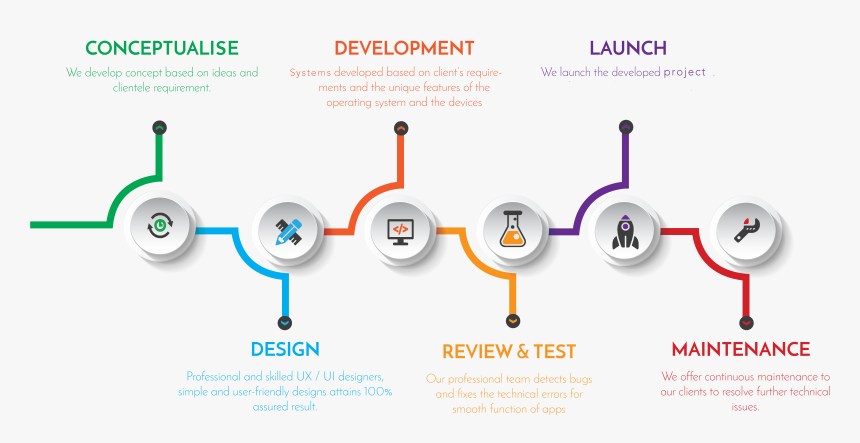In today’s digital age, where consumers are bombarded with endless options and information, creating a memorable and seamless user experience (UX) has become paramount for businesses. While marketing strategies may vary, one constant remains: the pivotal role of user experience in driving marketing success. This article explores the intricate relationship between UX and marketing, delving into how a well-crafted user experience can elevate brand perception, increase customer loyalty, and ultimately lead to business growth.
Understanding User Experience:
User experience encompasses every interaction a consumer has with a product, service, or brand. It involves the design, usability, accessibility, and overall satisfaction derived from these interactions. Whether navigating a website, using a mobile app, or engaging with customer service, every touchpoint shapes the user’s perception and influences their decision-making process.
- Enhancing Brand Perception:
The user experience plays a fundamental role in shaping how consumers perceive a brand. A seamless and intuitive interface communicates professionalism, reliability, and trustworthiness. On the other hand, a frustrating or confusing experience can tarnish a brand’s reputation and drive potential customers away.
- Driving Customer Engagement:
Engagement lies at the heart of effective marketing. A well-crafted user experience captivates users, encouraging them to explore further, interact with content, and ultimately take desired actions. Whether through compelling visuals, personalized recommendations, or interactive features, engaging experiences foster a deeper connection between the consumer and the brand.
- Fostering Customer Loyalty:
Building long-term relationships with customers requires more than just acquiring new leads; it necessitates cultivating loyalty and advocacy. A positive user experience creates a sense of loyalty by consistently meeting or exceeding user expectations. When consumers feel valued and understood, they are more likely to return and recommend the brand to others.
- Increasing Conversion Rates:
In the realm of digital marketing, conversion is the ultimate goal. Whether it’s making a purchase, signing up for a newsletter, or filling out a contact form, conversions drive business growth. A seamless user experience streamlines the conversion process, removing obstacles and guiding users towards the desired action.
- Leveraging Data Insights:
Data analytics play a crucial role in optimizing the user experience. By analyzing user behavior, preferences, and pain points, marketers can gain valuable insights into how to enhance the overall experience. From A/B testing different layouts to refining content based on user feedback, data-driven decisions lead to iterative improvements that resonate with the target audience.
Implementing Best Practices:
Creating an exceptional user experience requires a holistic approach that integrates design, technology, and psychology. Here are some best practices to consider:
- User-Centric Design:
Put the needs and preferences of the user at the forefront of the design process. Conduct user research, gather feedback, and iterate based on real-world usage to create intuitive interfaces that prioritize usability and accessibility.
- Consistent Branding:
Ensure consistency across all touchpoints to reinforce brand identity and build trust with consumers. From the website to social media channels to physical stores, cohesive branding enhances recognition and fosters a sense of familiarity.
- Mobile Optimization:
With the proliferation of smartphones and tablets, optimizing for mobile devices is no longer optional—it’s essential. Responsive design ensures that the user experience remains seamless across various screen sizes and devices, catering to the preferences of an increasingly mobile-centric audience.
- Personalization:
Tailor the user experience to individual preferences and behaviors through personalized content, product recommendations, and marketing messages. By delivering relevant and timely information, personalization enhances engagement and drives conversions.
- Continuous Improvement:
User experience is not a one-time endeavor but an ongoing process of refinement and optimization. Monitor key metrics, gather feedback from users, and stay abreast of industry trends to adapt and evolve the user experience over time.
Case Studies:
To illustrate the impact of user experience on marketing success, let’s examine two case studies:
- Airbnb:
Airbnb revolutionized the travel industry by prioritizing user experience from the outset. Through intuitive search filters, high-quality visuals, and detailed listings, Airbnb provides a seamless booking experience that caters to diverse traveler preferences. By focusing on trust and transparency, Airbnb has built a global community of loyal users who return to the platform time and again.
- Apple:
Apple’s commitment to user experience is evident in every aspect of its products and services. From the intuitive interface of its devices to the seamless integration of hardware and software, Apple prioritizes simplicity, elegance, and functionality. By fostering an emotional connection with its customers, Apple has cultivated a fiercely loyal fan base that eagerly anticipates each new product release.
Conclusion:
In an increasingly competitive marketplace, the user experience has emerged as a critical differentiator for businesses seeking to drive marketing success. By prioritizing usability, engagement, and personalization, brands can create memorable experiences that resonate with consumers, foster loyalty, and ultimately drive business growth. As technology continues to evolve and consumer expectations shift, businesses must remain agile and adaptive, continuously refining the user experience to meet the ever-changing needs of their audience.
